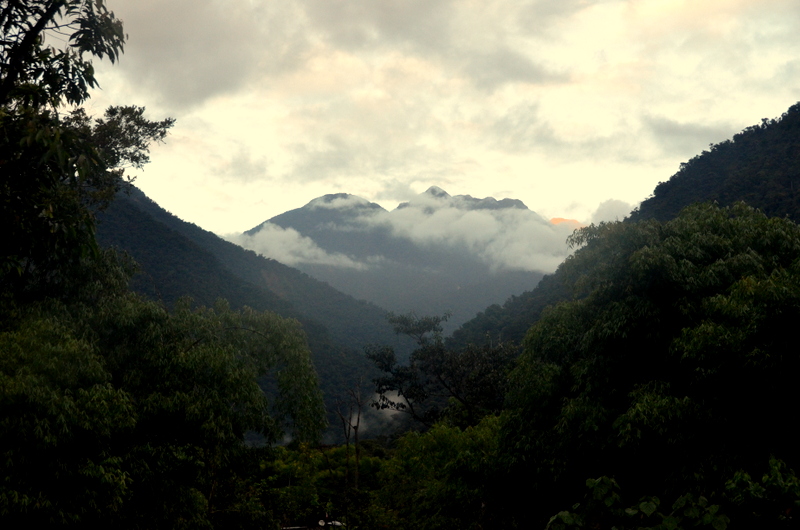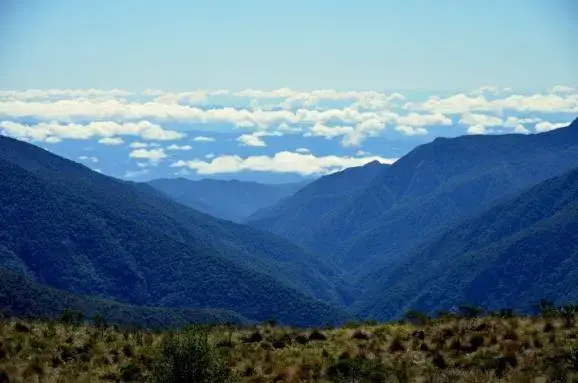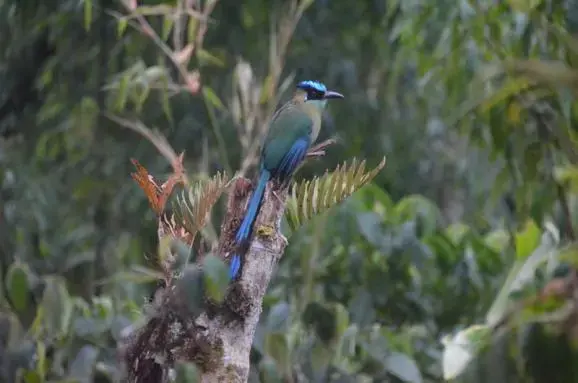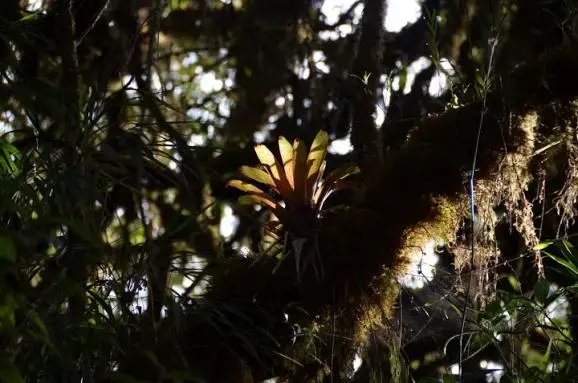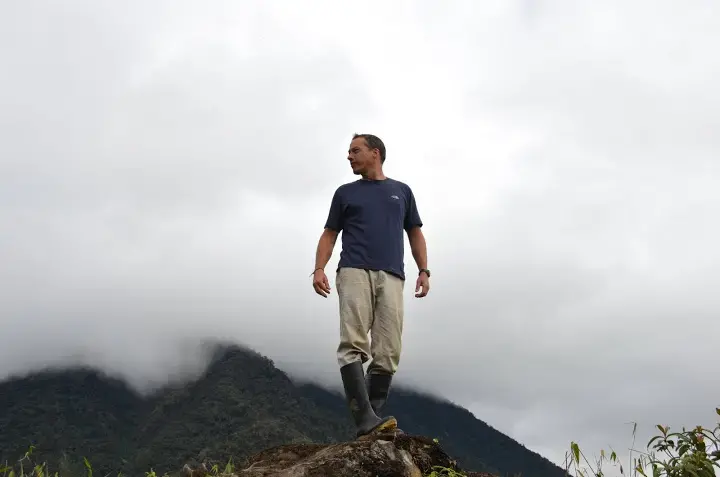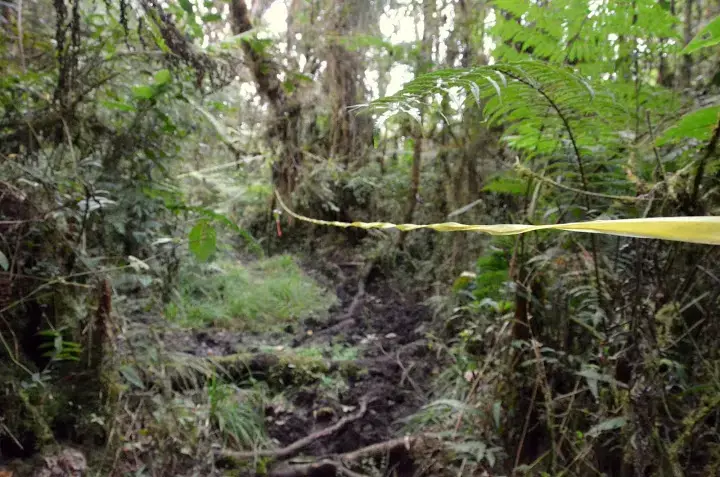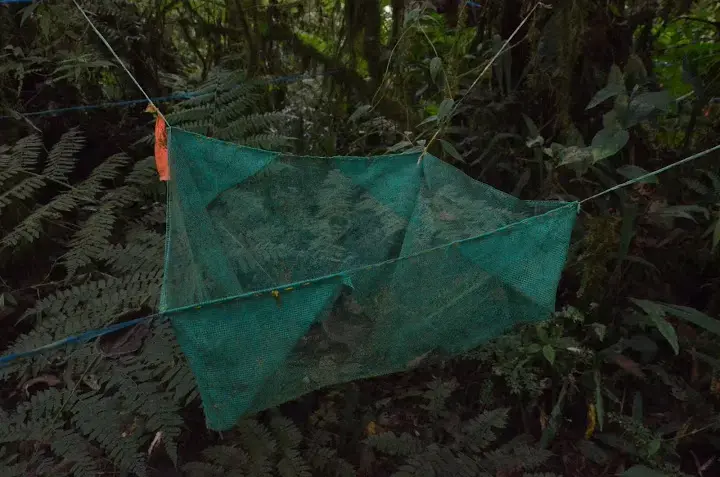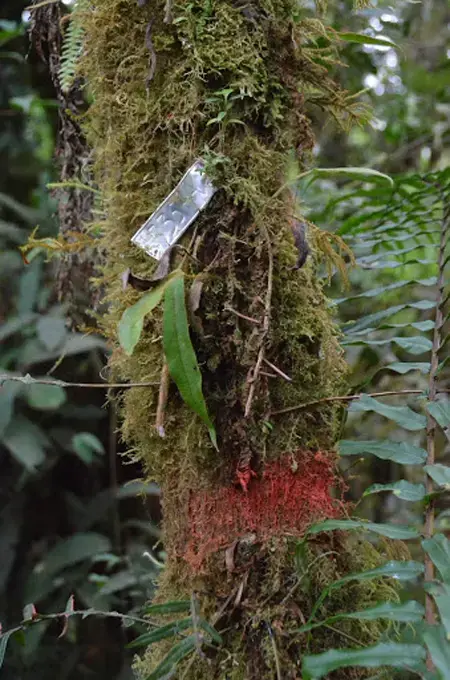This story originally aired on WUNC. To listen to the program, visit their website.
Melting ice caps at the poles are not the only concern when thinking about global warming. Increasingly, scientists are realizing that the impact of rising temperatures on tropical forests is just as dramatic.
On a rain forest mountain top where I had just seen woolly monkeys swinging through the trees, I asked Wake Forest biologist Miles Silman if we were simply putting too much greenhouse gas in the air to slow or halt the inevitable march of climate change.
"No," Silman says. "And even if we were, right, the only chance you have, if you're a pilot, is you fly it into the ground. Cause you might just pull it out."
Silman is a pilot of sorts for the cause of preserving tropical forests. And he clings to such dark forms of hope in the face of climate change not experienced since the last Ice Age. He first started studying tropical forests in Peru more than 20 years ago as a PhD student at Duke. Ten years ago, he and other top tropical biologists from the United Kingdom, United States and Peru founded the Andes Biodiversity and Ecosystem Research Group.
Above the clouds on a 13,000-foot peak in Manu National Park, the forest below looks lush and healthy. Silman knows the image is deceiving.
"So, we're looking into this vast area. We can see Bolivia. We can almost see Brazil," Silman says. "The vista we have is one of the most amazing in the world. As just a person looking out, it's hard to say it's under duress. But when we start to measure them, and look at their physiology, their rates of living and dying, we see that they are responding."
In the steep, mountainside study field of the Andes Group, a research plot is roped off about every 800 feet downslope. Inside each plot, every tree is marked, measured and tracked, and has been for 10 years. Because these trees live in very narrow temperature ranges, and because each plot is filled with an almost entirely different set of species, the Andes scientists are seeing something pretty incredible. The trees are migrating upslope. Not literary, but when they reproduce. It's not a stretch to say that there's a race right now in the rain forest.
Ken Feeley is a tropical biologist at Florida International University in Miami. His research established for the first time that these tropical species are migrating in response to global warming.
"If we just say the trees are migrating upslope, you can say that's good news," says Feeley. "They are responding to climate change in a way that they will keep their equilibrium with climate and won't decrease their populations and go extinct. The problem is two-fold – they are not migrating fast enough, and they are going to run out of places to migrate to."
Trees appear to be moving upslope as much as 12 feet a year. But to keep pace with rising temperatures, they need to be moving at least 20 feet. Most of them won't be able to do that. And if they can't, Feeley predicts that we could be looking at massive tree and plant extinctions in just the next 50 to 75 years.
The Andes Group held its tenth scientific meeting in August. About 80 international scientists gathered in Pisac, Peru, not too far from Machu Picchu. Yadvinder Mahli is a leading tropical biologist from Oxford University. He explained that climate change in the tropics affects all of us, perhaps even more so than the melting ice caps at the poles. That's because tropical forest are the functional lungs of the earth.
"Small changes in the tropics can have huge ramifications for the entire earth system," says Mahli. "Changes in rainfall in the Amazon leads to changes in rainfall in North America and Europe and Asia. What happens in the tropics determines what happens to the earth's biodiversity. We are on a tropical planet. We just don't realize it because so many of us live in the colder latitudes."
In Pisac, biologists like Silman, Feeley and Mahli were gripped by a unifying concern: If tropical forests in South America and Asia die off or shrink even more, we will lose the services they provide such as pulling greenhouse gasses from the atmosphere. That could mean the ice caps will melt faster, sea levels will rise higher and extreme weather – like hurricanes and droughts – will come faster and more furiously.
So, is the pilot steering this plane into the ground? Can he pull up in time?
Scientists say it's going to take some big ideas, like international carbon offsets. That's where wealthy countries that do a lot of polluting will pony up and pay poor countries like Peru to conserve their tropical forests.
Another scientist at the Pisac meeting was Sassan Saatchi with the NASA Jet Propulsion Laboratory at Cal Tech. His satellite surveys are helping tropical countries estimate the value of the carbon that's stored in their forests.
As the Pisac meeting closed, Saatchi traveled with scientists from the Andes Group to present their research findings to Peruvian environmental officials for the very first time.
"Tomorrow we're going to be in Lima talking to the policymakers, and I know that one thing that they are very much interested in is how much carbon they have," says Saatchi. "How this carbon is changing through deforestation, through climate change. How can we use it as a resource? If you have so many billion tons of carbon stored in your forest, suddenly for a country of Peru, that becomes an asset like Saudi Arabia's oil money."
As big ideas go, environmentalists believe that carbon offsets can be a game changer in slowing the rate of global warming. But it's not catching on very quickly. Ecuador just announced it would open up 4,000 square miles of Amazon jungle to oil drilling. It asked for $3.6 billion to protect the land. But after six years, virtually no developed countries agreed to invest. Making Ecuador's decision easier, perhaps, was China, which indicated it wants the Amazonian oil.
In Lima, Peruvian environmental officials listened closely as the Andes Group biologists explained their findings in Spanish. Those officials told me later that the information could lead to new policies. They know they control a vital global asset. But like Ecuador, Peru is a poor country, and the demands for ranching, mining and drilling can be hard to resist.
Still, Carlos Loret De Mola, a top adviser to the Peru's Minister of the Environment, believes change must come:
"We will not be able to accommodate the extractive industries they were done in the 20th century," says De Mola. "We need to do it in a different way, in a much better way. And we have to keep our ecosystems alive."
For Peru, it won't be easy. But the biologists from the Andes Group believe their research should be seen as a warning flare, one that prompts policy makers to look beyond the melting ice caps in order to take action to protect tropical forests, not just in the Amazon basin, but around the world.


